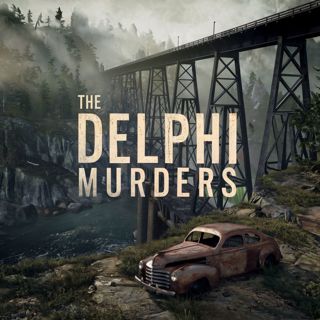
Delphi’s Ignored Leads — Why Investigators Dropped the Red Flags-WEEK IN REVIEW
Today, defense attorney Bob Motta and I take a hard look at one of the most troubling aspects of the Delphi murder investigation: the leads that were dismissed, minimized, or never meaningfully followed. The depositions show something the public has never had a clear window into — investigators explaining why certain suspects weren’t pursued, why certain statements didn’t matter, why symbolic elements of the crime scene were ignored, and why potentially exculpatory information was either downplayed or outright forgotten. In this conversation, Bob breaks down how two individuals tied to the Odinism angle — individuals whose behavior should have triggered deeper investigation — were inexplicably filed as “no further action.” One made a disturbing comment about whether his DNA would be found on the girls. The other posted imagery eerily similar to the crime scene and owned a .40-caliber handgun that was never seized or tested. These aren’t fringe details. These are red flags. Massive ones. Yet the investigative record treats them as footnotes. Bob and I go through why leads like these get dropped, how narrative lock affects decision-making, and what happens when the pressure to find “the right suspect” overshadows the obligation to explore every suspect. We cover the symbolic patterns on the girls’ bodies, the missing tree-origin analysis on the sticks, the late disclosure of the Odinism file, and the dissonance between what investigators told the public versus what they swore to in depositions. This isn’t speculation. It’s not theory. It’s the investigators themselves, under oath, explaining why critical evidence was set aside — and whether that decision is now going to haunt the state on appeal. If you want to understand the investigative blind spots in the Delphi case, this is the episode. #Delphi #RichardAllen #TrueCrimeAnalysis #IgnoredEvidence #LegalInsights #DelphiDepositions #CrimeSceneReview #JusticeSystem #HiddenKillers #InvestigativeFailures Want to comment and watch this podcast as a video? Check out our YouTube Channel. https://www.youtube.com/@hiddenkillerspod Instagram https://www.instagram.com/hiddenkillerspod/ Facebook https://www.facebook.com/hiddenkillerspod/ Tik-Tok https://www.tiktok.com/@hiddenkillerspod X Twitter https://x.com/tonybpod Listen Ad-Free On Apple Podcasts Here: https://podcasts.apple.com/us/podcast/true-crime-today-premium-plus-ad-free-advance-episode/id1705422872
22 Nov 59min

The Timeline That Can and Will Destroy Brian Walshe in Court-WEEK IN REVIEW
The story of Ana and Brian Walshe is not just another missing-person case. It’s a timeline filled with pressure, contradictions, and behavior that—when laid out piece by piece—paints an unsettling picture of a marriage heading toward a breaking point. And now, as Brian prepares to stand trial, prosecutors are preparing to bring every moment of that timeline into full view. In this episode of Hidden Killers, I walk through the complete chronology: the instability leading up to Ana’s disappearance, the imbalance in the relationship, the rising pressure from Brian’s ongoing legal issues, and the future Ana was working relentlessly to build. What emerges, at least in my opinion, is the portrait of a woman carrying far more than any one person should, and a man whose documented behavior only deepened that burden. We look at the allegations prosecutors have presented: the reported timeline inconsistencies, the searches investigators say were made in the days after Ana vanished, and the forensic findings authorities claim point to deliberate concealment. None of this has been proven in court, and Brian maintains his innocence. But taken together, these publicly reported details offer a window into what the jury is about to confront when this trial begins. This is not a straightforward case. There is no recovered body. There is no confirmed cause of death. And yet the timeline, behavior patterns, and surrounding circumstances raise questions that demand a deeper look. This episode is my commentary—my analysis—based on publicly available information and prosecutors’ filings. And as the trial approaches, that timeline may become one of the most powerful tools the state has. If you’ve been following this case, or if you want a comprehensive walkthrough of the events leading up to this moment, this is the breakdown you’ve been waiting for. Subscribe for more daily coverage, expert analysis, and conversations around the cases shaping this moment in true crime. #AnaWalshe #BrianWalshe #TrueCrimeUpdates #HiddenKillers #CourtCase #LegalAnalysis #CrimeTimeline #JusticeSystem #TrialCoverage #TrueCrimeCommunity Want to comment and watch this podcast as a video? Check out our YouTube Channel. https://www.youtube.com/@hiddenkillerspod Instagram https://www.instagram.com/hiddenkillerspod/ Facebook https://www.facebook.com/hiddenkillerspod/ Tik-Tok https://www.tiktok.com/@hiddenkillerspod X Twitter https://x.com/tonybpod Listen Ad-Free On Apple Podcasts Here: https://podcasts.apple.com/us/podcast/true-crime-today-premium-plus-ad-free-advance-episode/id1705422872
22 Nov 15min

Reckless or Murder? The Fraser Bohm Case Forces a Hard Question-WEEK IN REVIEW
Four young women. One devastating crash. And a courtroom now wrestling with a question nobody wants to ask out loud: when does reckless behavior cross the line into murder? In today’s episode of Hidden Killers with Tony Brueski, we dive deep — not into outrage, not into assumptions, but into the uncomfortable space where law and emotion collide. The case of Fraser Michael Bohm, the 22-year-old accused of driving over 100 mph on Malibu’s Pacific Coast Highway before striking parked cars and killing four Pepperdine students, is now shaping up to be one of the most complex legal and moral debates in recent memory. Prosecutors say Bohm knew the danger. He knew the road. He’d lost friends to high-speed crashes before. And yet, according to investigators, he pushed his BMW past triple-digit speeds on a stretch known as “Dead Man’s Curve.” They argue this wasn’t a random tragedy — it was implied malice, the level of awareness that elevates a fatal crash into murder under California law. But the defense sees something different. They call this a catastrophic mistake — not malice. They point to his lack of impairment, his clean record, the possibility of panic or misjudgment, and the long legal tradition that separates negligence from murder. They argue that broadening the definition of malice risks criminalizing tragedy rather than intention. So who’s right? Does the foreseeability of danger define the crime? Or should the law resist bending under the weight of public grief? This episode challenges assumptions on both sides. It asks you to sit with the discomfort and think — truly think — about what justice means in a case where intent, recklessness, and tragedy all overlap. If you’ve already picked a side in the Bohm case… this might make you reconsider. 🎙️ Subscribe for in-depth, emotionally grounded true-crime analysis that’s never shallow, never sensational — just honest. #FraserBohm #HiddenKillers #TonyBrueski #PepperdineCrash #VehicularMurder #MalibuCrash #CourtTV #TrueCrimeCommentary #CriminalJustice #RecklessDrivingCase Want to comment and watch this podcast as a video? Check out our YouTube Channel. https://www.youtube.com/@hiddenkillerspod Instagram https://www.instagram.com/hiddenkillerspod/ Facebook https://www.facebook.com/hiddenkillerspod/ Tik-Tok https://www.tiktok.com/@hiddenkillerspod X Twitter https://x.com/tonybpod Listen Ad-Free On Apple Podcasts Here: https://podcasts.apple.com/us/podcast/true-crime-today-premium-plus-ad-free-advance-episode/id1705422872
22 Nov 21min

Melodee Buzzard. Celeste Rivas. Two Cases Nobody Can Explain-WEEK IN REVIEW
Some cases hit you in the gut, not because the details are complex, but because they’re painfully simple — and still, nothing happens. That’s the reality tonight as we look at the stories of Melodee Buzzard and Celeste Rivas Hernandez, two young girls caught in two different investigations that somehow keep producing the same baffling outcome: no real movement. Nine-year-old Melodee is missing. Her mother, Ashlee — the last adult with her — spent days traveling across state lines in disguises, swapping licenses, behaving erratically, and allegedly holding a man in her home while threatening him with a blade. Every red flag possible is waving, yet she’s free on an ankle monitor. No cooperation. No answers. No urgency from the bench. Fourteen-year-old Celeste was found in the frunk of a Tesla registered to musician D4vd — sealed inside a plastic bag, far into decomposition — and months later the medical examiner still can’t confirm cause or manner of death. No homicide charge. No negligence charge. Nothing but a misdemeanor for body concealment. And the silence around the investigation is deafening. Two different cities. Two different sets of facts. But the same disturbing theme: a system that acts confused at the exact moment when clarity is most needed. Retired FBI Special Agent Jennifer Coffindaffer joins us to break down why these cases are stalling, why their outcomes remain so unclear, and why families and the public feel like they’re shouting into a void while the clock keeps ticking. If you’re watching these cases and wondering how either situation makes sense — you’re not alone. Let’s dig in. #HiddenKillers #TrueCrime #MelodeeBuzzard #CelesteRivasHernandez #BuzzardCase #D4vdCase #MissingKids #CrimeAnalysis #JenniferCoffindaffer #TrueCrimeCommunity Want to comment and watch this podcast as a video? Check out our YouTube Channel. https://www.youtube.com/@hiddenkillerspod Instagram https://www.instagram.com/hiddenkillerspod/ Facebook https://www.facebook.com/hiddenkillerspod/ Tik-Tok https://www.tiktok.com/@hiddenkillerspod X Twitter https://x.com/tonybpod Listen Ad-Free On Apple Podcasts Here: https://podcasts.apple.com/us/podcast/true-crime-today-premium-plus-ad-free-advance-episode/id1705422872
22 Nov 1h 4min

What Happened to Anna Kepner on That Cruise — and Why Her Family’s SECRET History Matters!
What happened aboard the Carnival Horizon the morning 18-year-old Anna Kepner died is disturbing enough on its own. But when you look at the people in that cabin with her — and the long, complicated history surrounding this blended family — the picture becomes even more unsettling. In this episode, Tony Brueski takes you deep into the evolving investigation into the death of Florida teen Anna Kepner, whose body was discovered concealed under a bed, wrapped in a blanket, and partially covered by life vests. The FBI boarded the ship the moment it docked in Miami, and new filings now reveal one of Anna’s minor stepsiblings could face criminal charges. That revelation came directly from court documents filed by Anna’s stepmother, who has since invoked the Fifth Amendment to avoid testimony that could incriminate her or her child. This story reaches far beyond the cruise ship. It reaches into old family records, including a 2008 civil injunction for protection against sexual violence filed against Anna’s father — an injunction filed by a woman whose minor daughter he would later marry. That marriage became Anna’s second stepmother. Years later, a third marriage brought in the children who were on the cruise with her, including the teen now under FBI scrutiny. Only Anna’s grandmother and uncle are speaking out publicly, calling for answers and justice. Meanwhile, her father and stepmother remain nearly silent, offering no clarity, no timeline, and no emotional response aside from frustration with investigators. With the autopsy still pending, the FBI tight-lipped, and a cabin full of unanswered questions, this case has become one of the most complex and emotionally charged cruise-ship investigations in years. Today’s monologue breaks down everything we know — the facts, the filings, the timelines, the dynamics — and asks the question everyone else is afraid to say out loud: how does a family vacation turn into a federal investigation, and why was Anna left hidden under a bed? Stay tuned as we continue following every development in this heartbreaking case. #HiddenKillers #AnnaKepner #CarnivalCruise #TrueCrime #TonyBrueski #Investigation #FBI #Stepmother #Stepbrother #MaritimeCrime #CrimeNews Want to comment and watch this podcast as a video? Check out our YouTube Channel. https://www.youtube.com/@hiddenkillerspod Instagram https://www.instagram.com/hiddenkillerspod/ Facebook https://www.facebook.com/hiddenkillerspod/ Tik-Tok https://www.tiktok.com/@hiddenkillerspod X Twitter https://x.com/tonybpod Listen Ad-Free On Apple Podcasts Here: https://podcasts.apple.com/us/podcast/true-crime-today-premium-plus-ad-free-advance-episode/id1705422872
21 Nov 14min

WSU in the Hot Seat — Did They Ignore the Warnings About Kohberger?
The Goncalves family has taken the next step — not criminal, but civil. They’ve filed claims against Washington State University, arguing the school ignored repeated red flags about Brian Kohberger before the murders in Moscow. And now the question becomes: Does the law agree? In this deep-dive episode of Hidden Killers, Tony Brueski sits down with former prosecutor and defense attorney Eric Faddis to unpack the legal claims, the duty-of-care standards, the foreseeability argument, and the staggering list of complaints that WSU allegedly received long before the killings. Tony and Eric break down the core issues: • What duty does a university have when a graduate student — and teaching assistant — has multiple formal complaints? • Do warnings like “He’s a predator in the making” create legal exposure? • Do stalking-adjacent behaviors — blocking doorways, following students — meet the threshold for negligent supervision? • Does the fact that the murders occurred off-campus, in another state, change the legal calculus? • Could WSU actually be found liable for failing to remove or restrict him? • Or will the university argue: “We couldn’t have seen this coming”? • And is this lawsuit partly about discovery — forcing WSU to release internal emails, HR files, and Title IX records? Eric walks us through what plaintiffs need to prove, what defenses WSU will likely mount, and why this case could have massive implications for universities nationwide if a court allows it to move forward. This is one of the most legally significant developments to emerge from the Moscow murders — and it could reshape university policies around reporting, supervision, and risk. #HiddenKillers #BryanKohberger #WSU #TrueCrime Want to comment and watch this podcast as a video? Check out our YouTube Channel. https://www.youtube.com/@hiddenkillerspod Instagram https://www.instagram.com/hiddenkillerspod/ Facebook https://www.facebook.com/hiddenkillerspod/ Tik-Tok https://www.tiktok.com/@hiddenkillerspod X Twitter https://x.com/tonybpod Listen Ad-Free On Apple Podcasts Here: https://podcasts.apple.com/us/podcast/true-crime-today-premium-plus-ad-free-advance-episode/id1705422872
21 Nov 27min

The Human Mistakes That Shaped Delphi — FBI Behavioral Expert Reveals All
In this episode, Robin Dreeke — former FBI Special Agent and one of the country’s top behavioral analysts — joins me to examine the Delphi murders investigation through the only lens that can truly explain the depositions: human error. Evidence doesn’t make decisions. People do. And the depositions show a team of people overwhelmed, overloaded, and psychologically boxed in. Robin and I break down why investigators contradicted themselves, why memories shifted, why certain information was minimized, and why the entire system seemed to lose its grip on objectivity. Why did one investigator insist the FBI was removed from the case while another had no recollection of it? How did a key BAU assessment about ritual indicators disappear from the internal record? Why did the affidavit reshape crucial witness descriptions? Why were symbolic elements at the crime scene left largely uninterpreted? Why did the investigative team lock onto a lone-offender theory when their own internal testimony doesn’t even agree with it? Robin explains how narrative commitment forms inside a team under intense pressure — how the mind simplifies what is complex, how teams emotionally invest in a theory, and how anything that contradicts that theory begins to feel like a threat rather than a clue. We talk about burnout, tunnel vision, cognitive contamination, leadership vacuums, fragmented communication, and the psychological “reward loop” investigators get from forcing clarity onto chaos. This episode is not about conspiracy or blame. It’s about understanding how very human psychological patterns can quietly shape — and misshape — a homicide investigation. If you want to understand why the state’s clean narrative doesn’t match the messy reality #Delphi #BehavioralAnalysis #RobinDreeke #TrueCrimePodcast #InvestigationReview #CognitiveBias #RichardAllen #HiddenKillers #CrimeAnalysis #JusticeSystem Want to comment and watch this podcast as a video? Check out our YouTube Channel. https://www.youtube.com/@hiddenkillerspod Instagram https://www.instagram.com/hiddenkillerspod/ Facebook https://www.facebook.com/hiddenkillerspod/ Tik-Tok https://www.tiktok.com/@hiddenkillerspod X Twitter https://x.com/tonybpod Listen Ad-Free On Apple Podcasts Here: https://podcasts.apple.com/us/podcast/true-crime-today-premium-plus-ad-free-advance-episode/id1705422872
21 Nov 40min





















